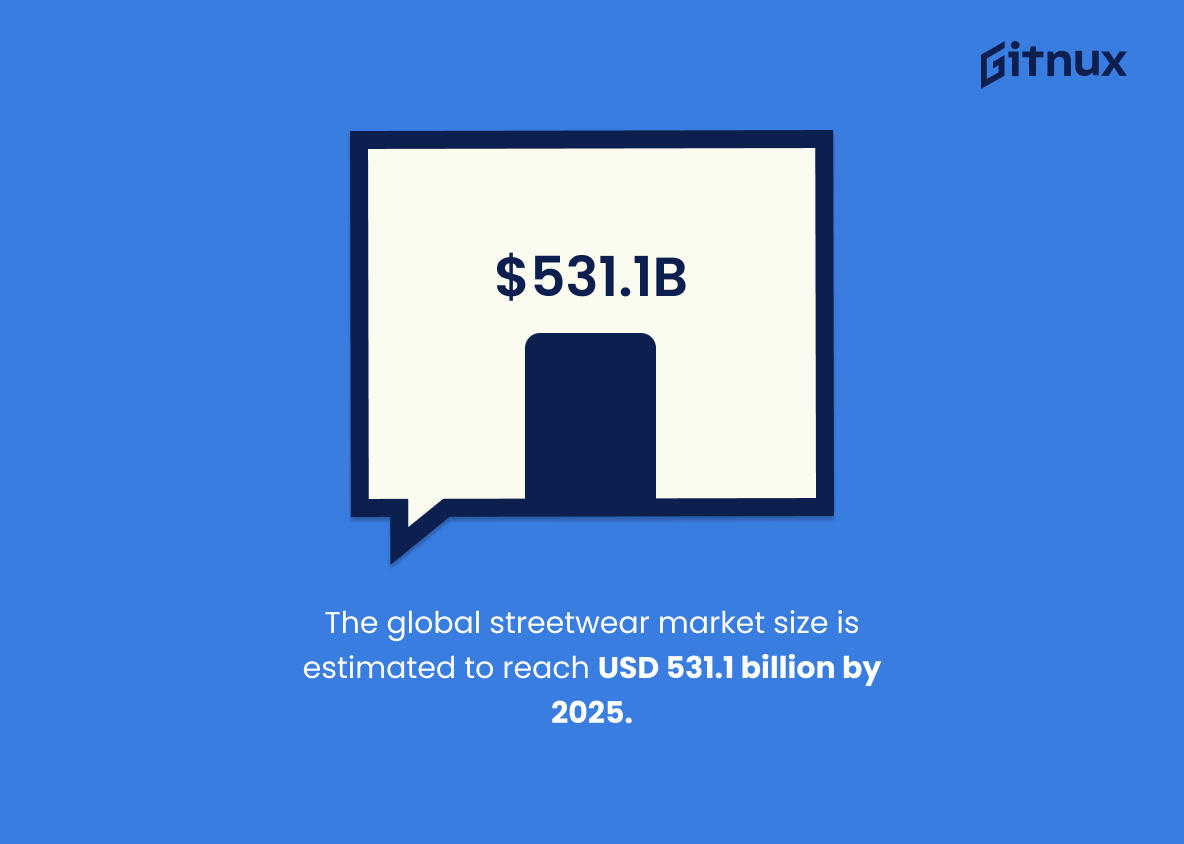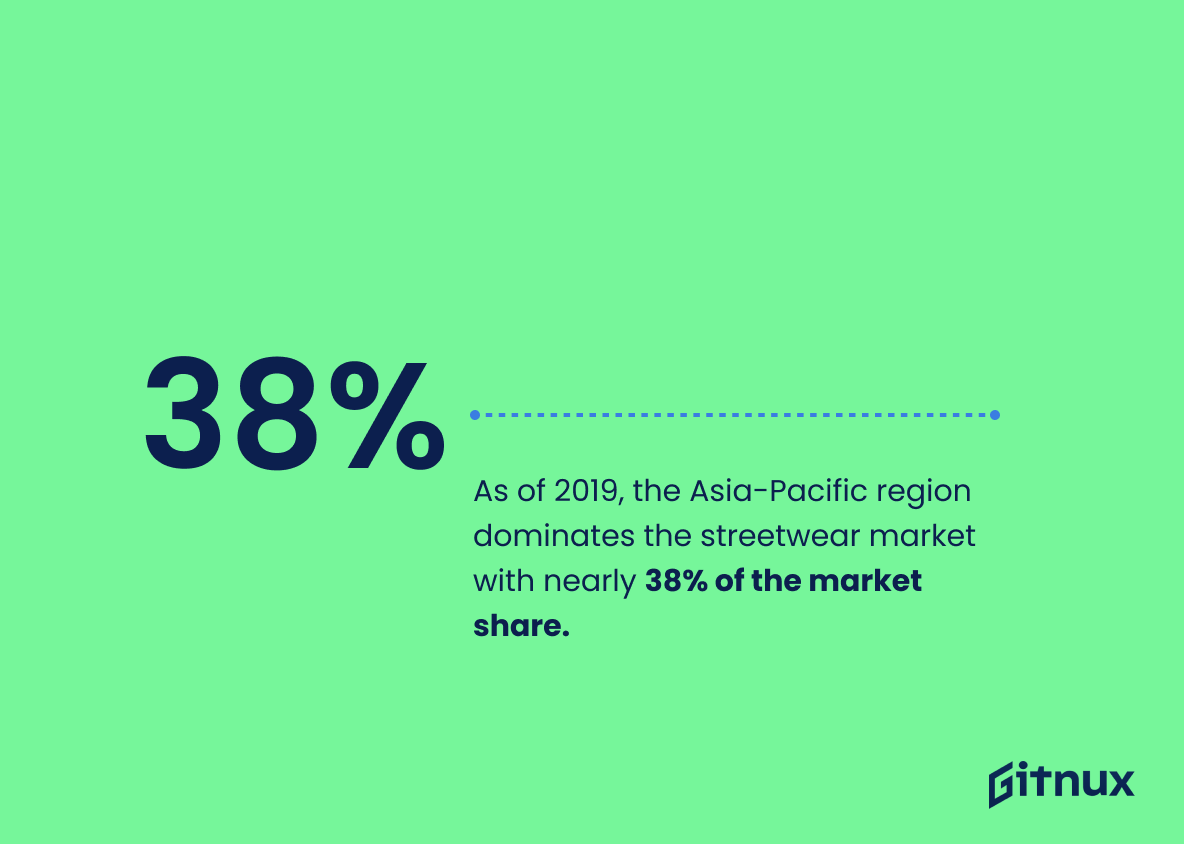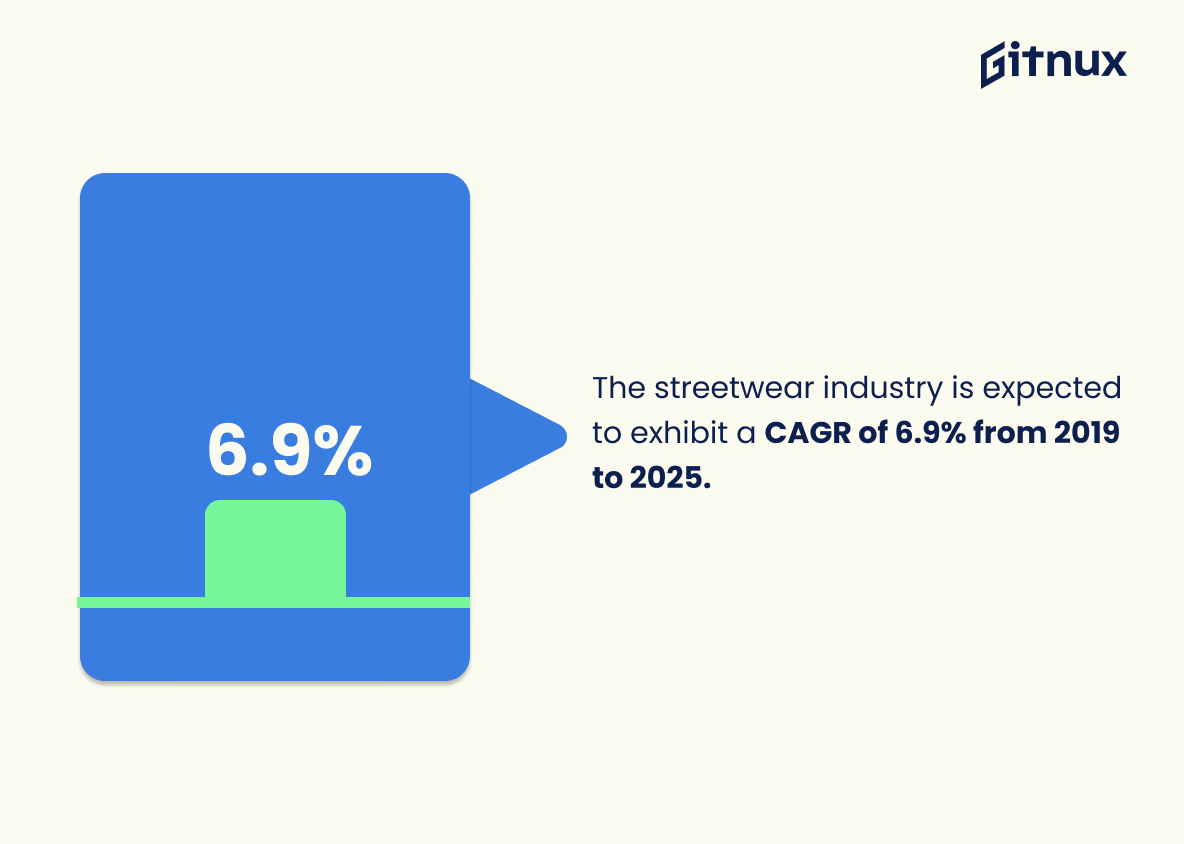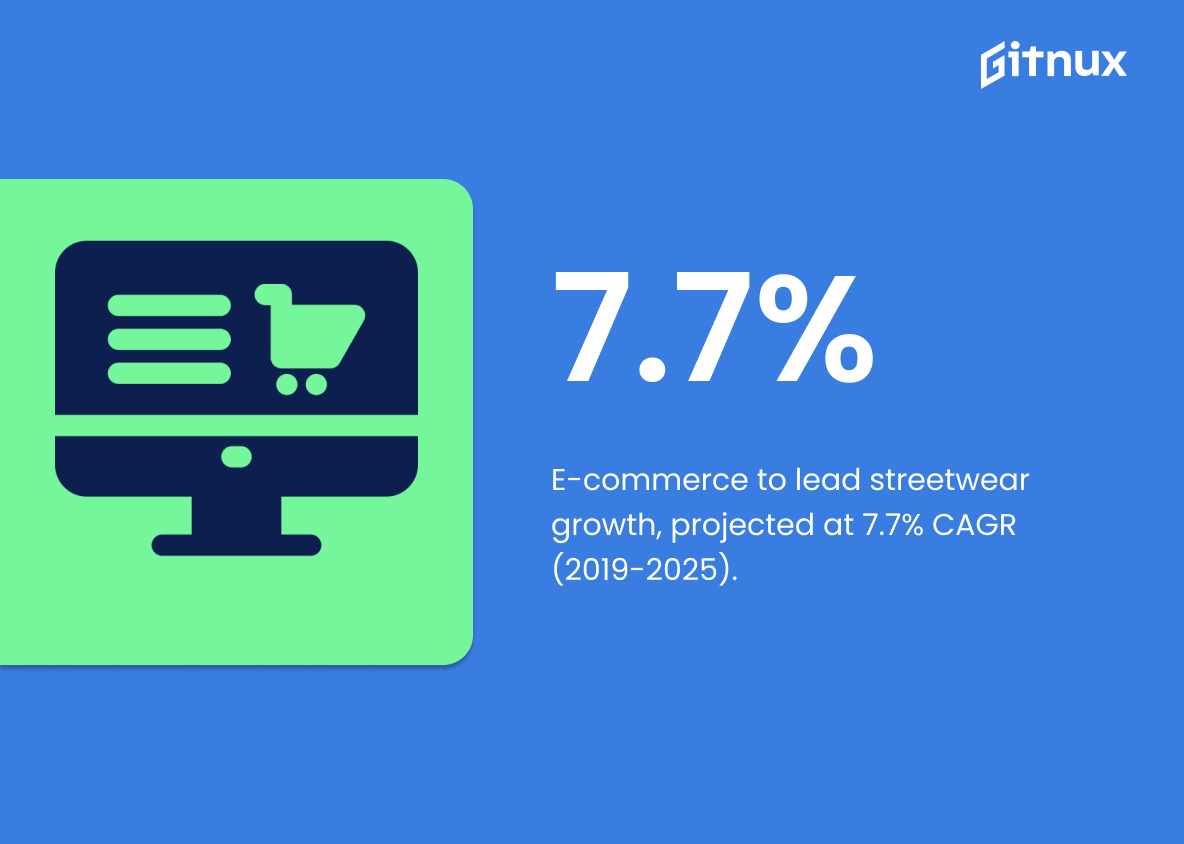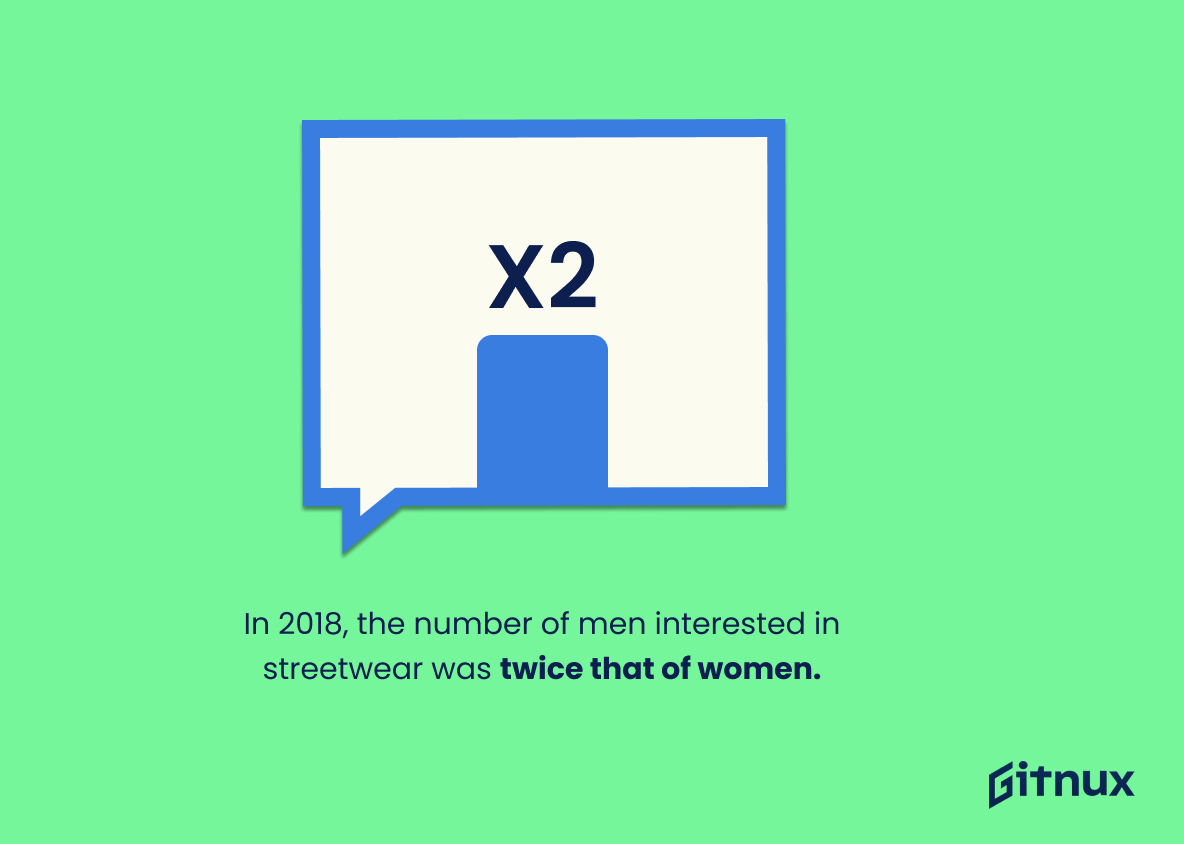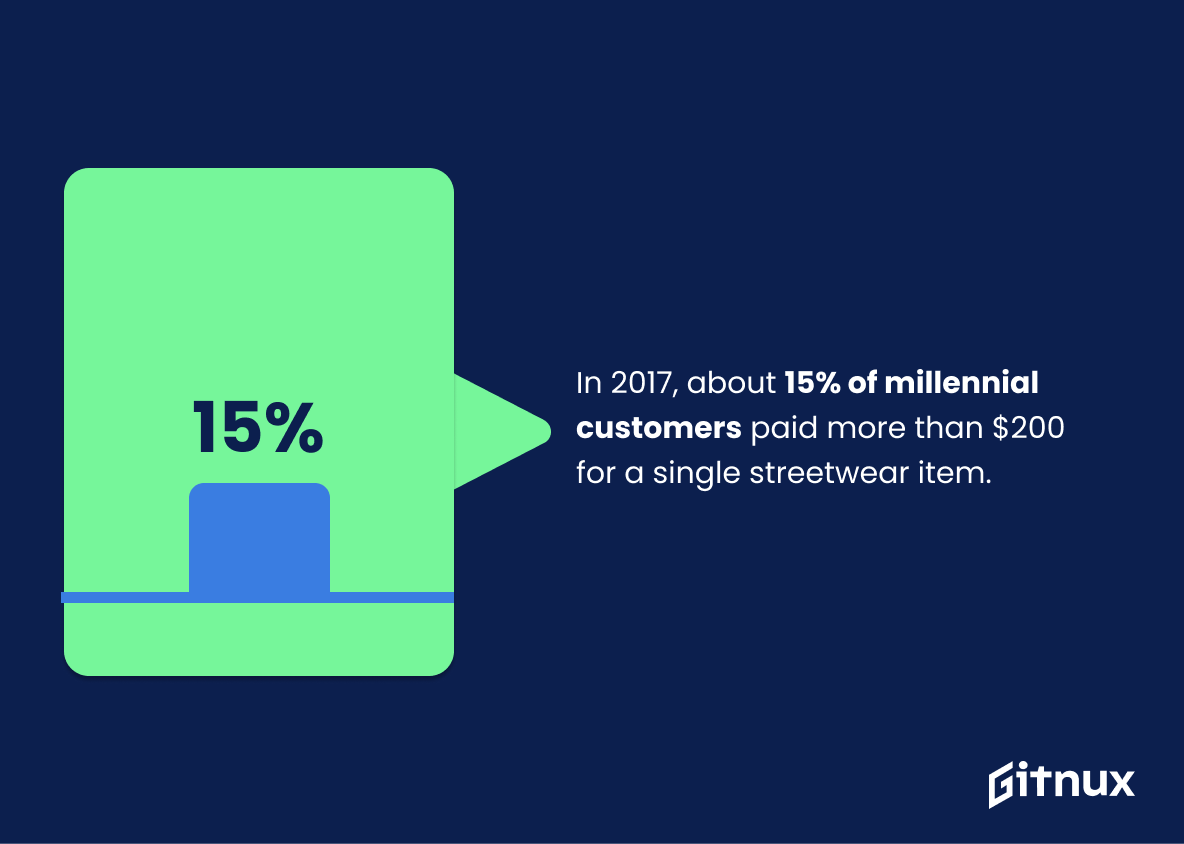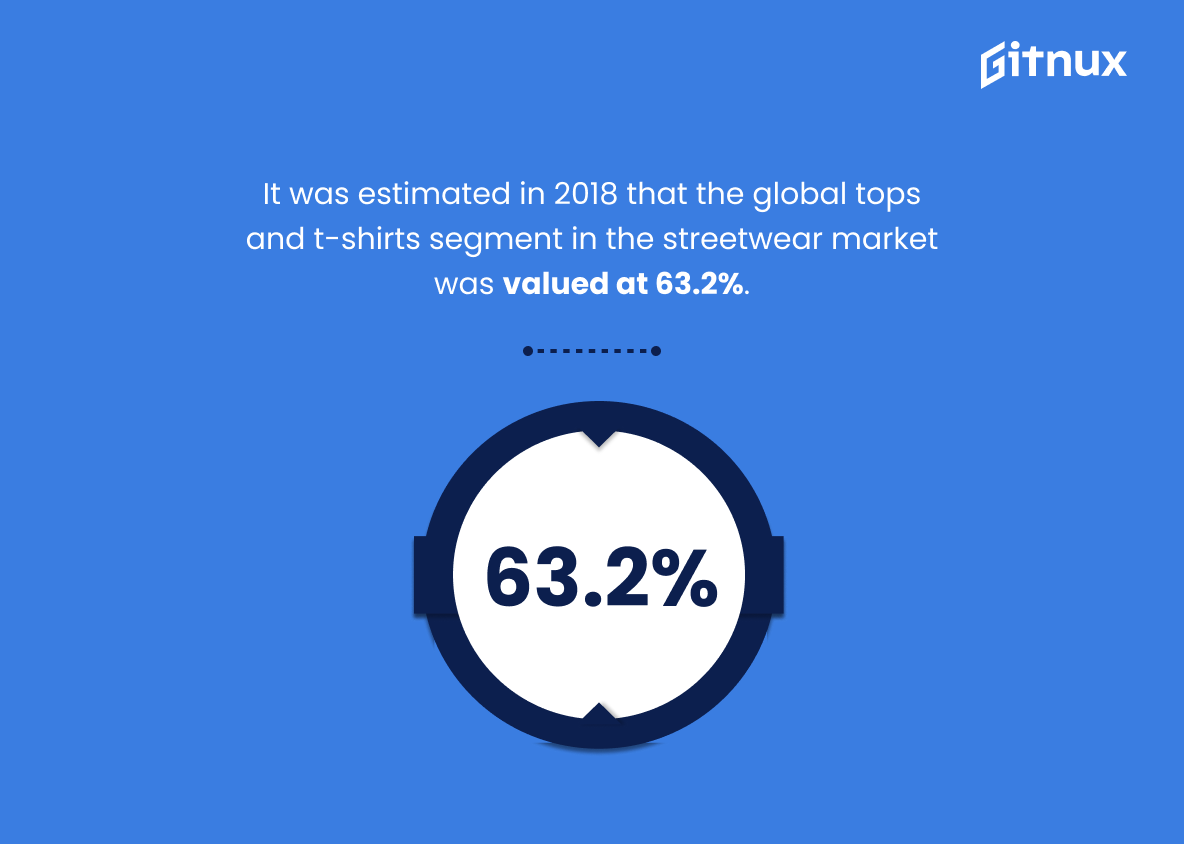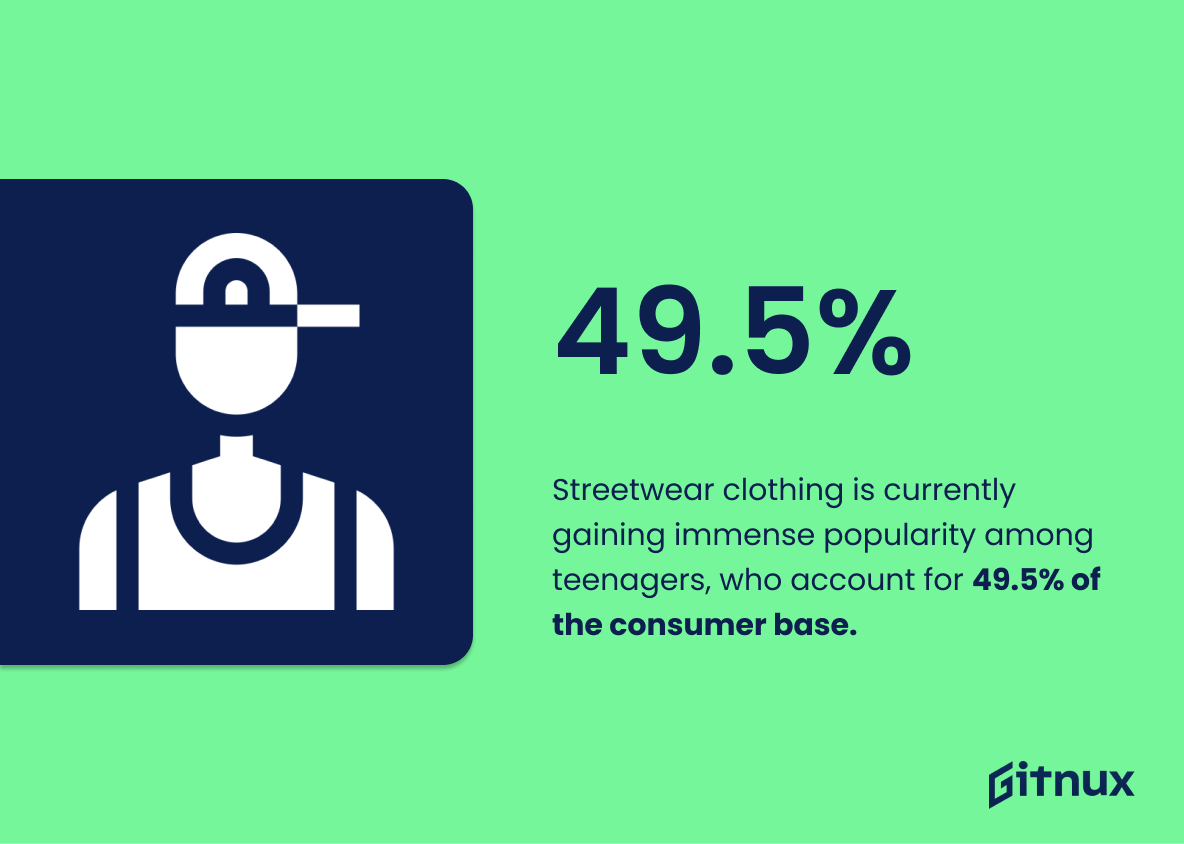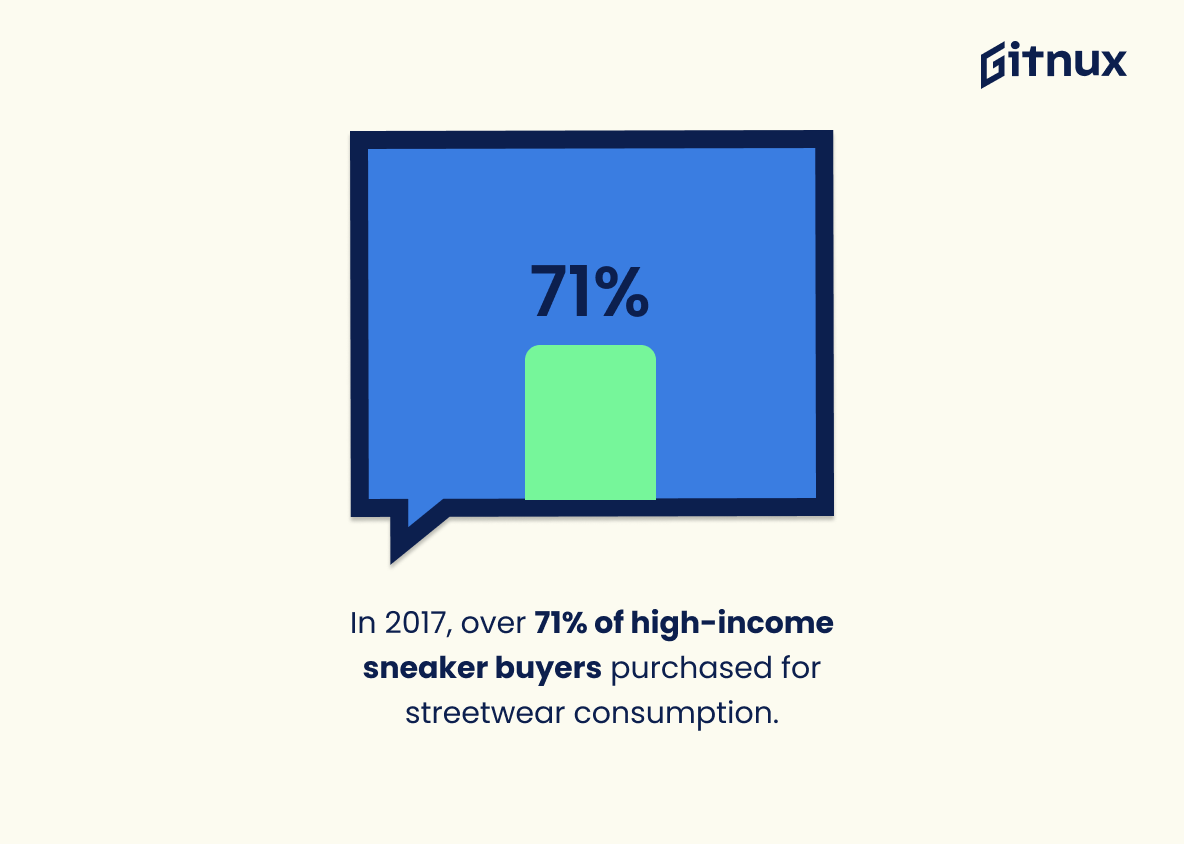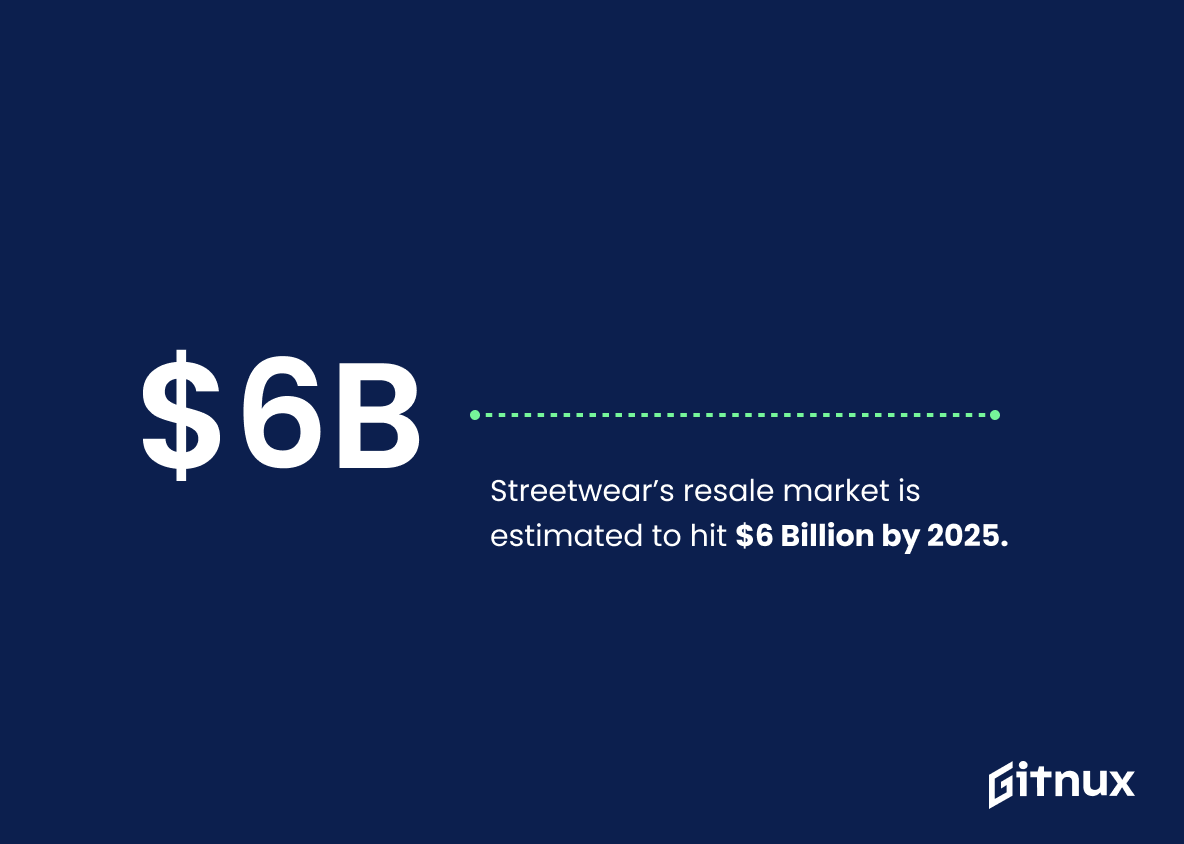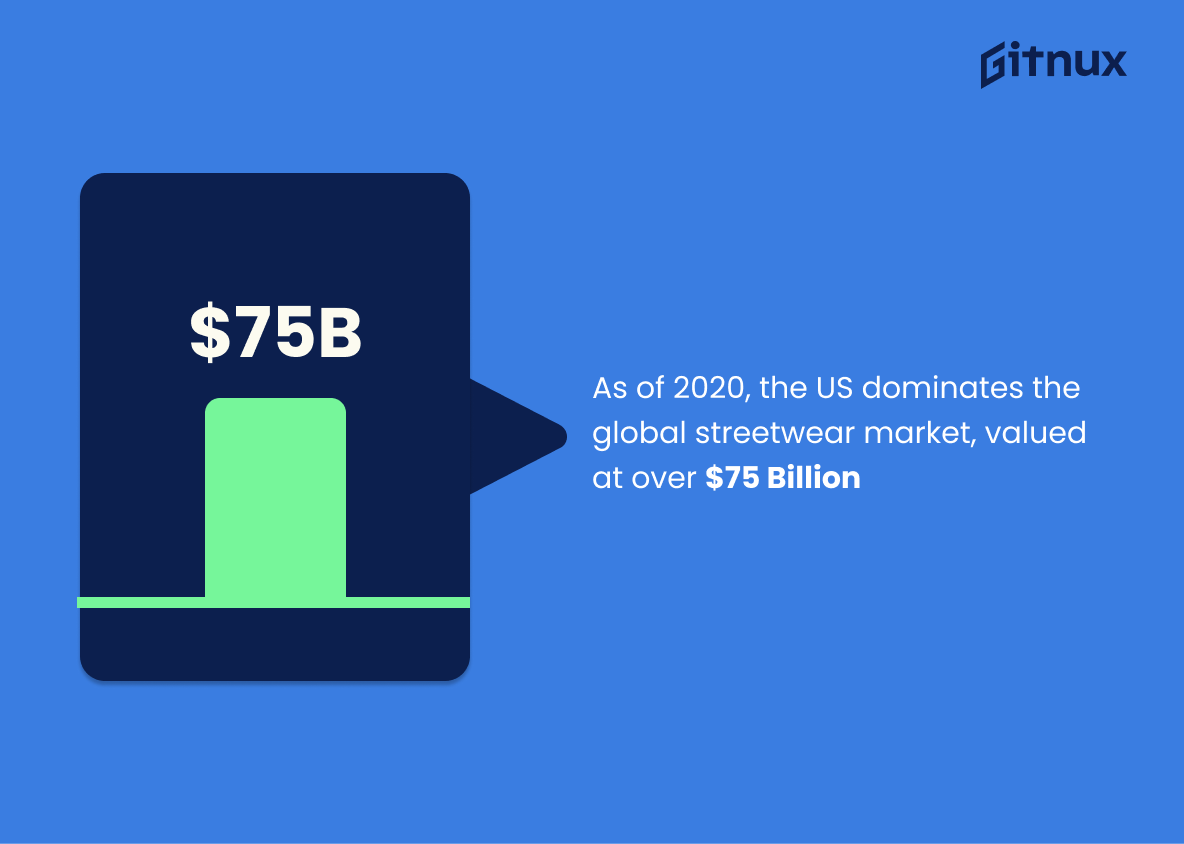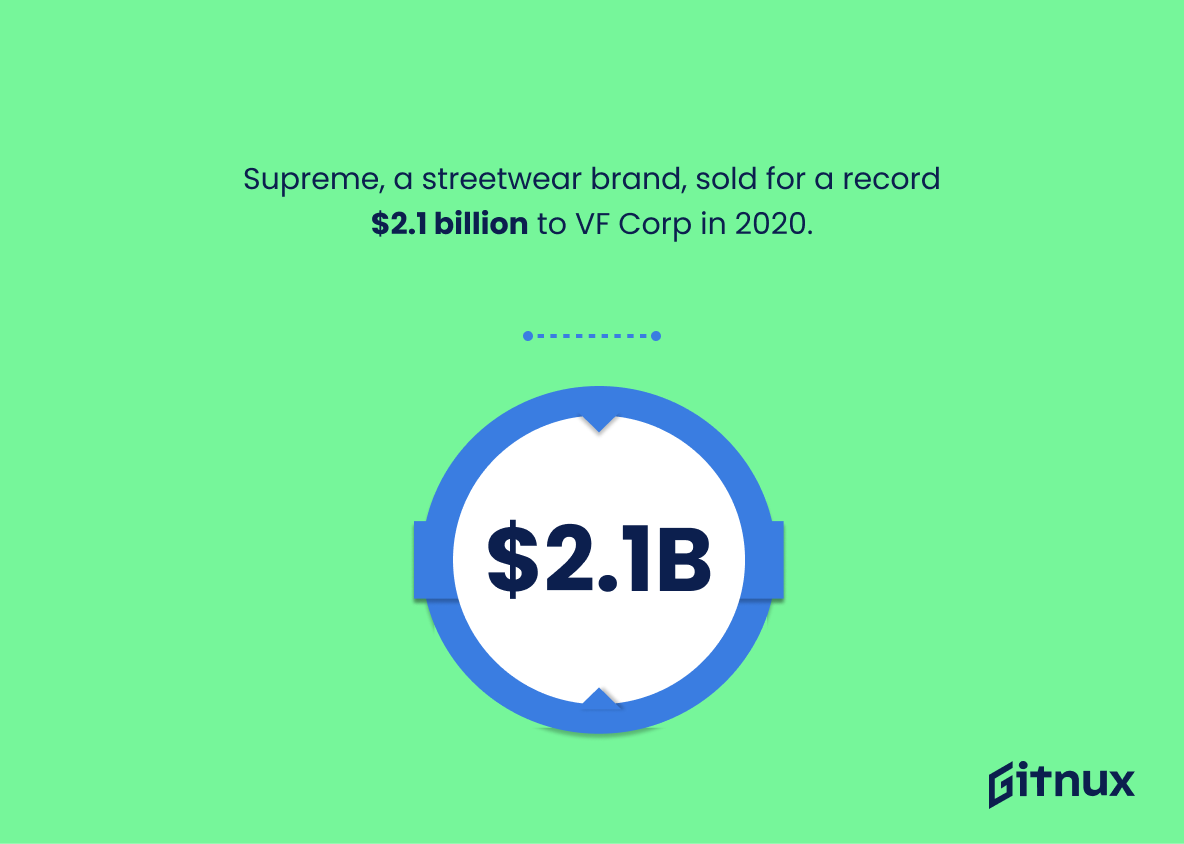As the fashion world continues to evolve, the streetwear industry is stepping boldly into the limelight. A dynamic blend of style, culture, and individualism, this industry has transcended its origins, morphing from a niche community to a global force. Our rapidly shifting world of fashion places streetwear at the vanguard, transforming trends and redefining what ‘fashion’ means in the 21st century. In this blog post, we dive deep into the captivating realm of the streetwear industry. We’ll explore its exceptional growth, analyze key statistics, and foresee what these trends could indicate about the future of this vibrant industry. Whether you’re a seasoned streetwear aficionado or someone simply intrigued by its surging popularity, these streetwear industry statistics are designed to give you valuable insights into this rapidly evolving fashion realm.
The Latest Streetwear Industry Statistics Unveiled
The global streetwear market was valued at approximately USD 175.21 billion in 2018.
Undeniably, the striking valuation of the global streetwear market at roughly USD 175.21 billion in 2018 alone serves as a testament to the undying popularity and economic gravitas of this fashion subculture. In the grand narrative of Streetwear Industry statistics, this figure punctuates an impressive crescendo; it is not only an indicator of the industry’s financial health, but also a numerical mirror reflecting the pervasive reach and acceptance of streetwear across continents. Thus, it provides a more vivid backdrop for understanding the influence of streetwear within both fashion and mainstream consumer culture globally. With such hefty economic weight tagged to the streetwear industry, stakeholders, investors and fashion enthusiasts alike, are given a quantifiable metric that vividly underscores the sheer magnitude and robust dynamism of this marketplace.
The global streetwear market size is estimated to reach USD 531.1 billion by 2025.
Gaze into the crystal ball of fashion, the future of streetwear industry reflects an exciting image, radiating a worth of an estimated USD 531.1 billion by 2025. Exhilarating, isn’t it? This metric provides a glimpse into the vibrant vitality and commercial magnetism of this not-so-underground-anymore fashion sector. This resounding figure paints the picture of an industry in the throes of momentous growth, highlighting the escalating consumer interest and the potential profitability for businesses operating in this area. Imagine being part of an industry with such extraordinary financial forecast, it’d feel more like surfing a gigantic wave than ambling down a quiet lane. So, to all the fashionistas, entrepreneurs or simply spectators, the streetwear industry is about to put on a show you wouldn’t want to miss.
As of 2019, the Asia-Pacific region dominates the streetwear market with nearly 38% of the market share.
In dissecting the vibrant panorama that constitutes the Streetwear Industry, a headline grafittingly pops: “Asia-Pacific region, flaunting a robust 38% of the Streetwear market share as of 2019.” The implications of this vivid brushstroke are twofold.
First, it boldly pronounces the East as the dominant player in this urban jungle, overruling North America and Europe. Think, Tokyo sidewalks out-fashioning New York pavements, Seoul streets stenciling bolder statements than Paris. The industry’s shifting infrastructures and influences now ripple mainly from this part of the globe.
Second, it forecasts an exponential potential for businesses focusing on streetwear. This region, already a goldmine of cultural fusion and youthful exuberance, presents an unrivaled and untapped canvas for international and emerging brands. Their strategic targeting and creative experimentations here could yield lucrative rewards.
Thus, the Asia-‘Pacific dominance is not just an interesting number, it is a crucial compass pointing towards the future of the Streetwear industry. This urban phenomenon has found its heart in the vibrant landscapes of Asia, pulsating with energy and potential.
The streetwear industry is expected to exhibit a CAGR of 6.9% from 2019 to 2025.
Crunching the numbers and delving into the world of streetwear industry statistics, anyone prowling the urban jungle of street fashion, whether as a designer, retailer, or aficionado, would be delighted to trip across the impressive nugget of information: a predicted Compound Annual Growth Rate (CAGR) of 6.9% from 2019 to 2025. This percentage of growth isn’t just a digital whisper; it’s a bold roar promising robust and continual progress in the industry.
Forecasting the consistent upswing of the streetwear industry, this CAGR of 6.9% is a siren song to investors, retailers, and designers alike. This nifty little statistic highlights the streetwear industry’s ever-increasing popularity as a profitable hub of opportunity, innovation, and branding potential. Talk about hustle and flow—this growth data demonstrates that the streetwear market keeps not just walking, but strutting into promising future territory. It is not just a passing trend; it’s geared to be a mainstay, constantly evolving while maintaining its lucrative allure.
So, if you’re part of the streetwear conversation, consider this statistic your pacesetter as you look ahead to 2025, creating strategies or perhaps designing the next big thing on the block. The allure of the urban culture-inspired fashion seems far from over, and your blog post should reflect this reality.
The women’s segment in the streetwear industry accounted for 39.2% of the overall revenue in 2018.
Delving into the engrossing world of streetwear fashion, the striking presence of female influence cannot be ignored. Registering a significant 39.2% contribution to the overall revenue in 2018, the women’s segment is an undeniable force shaping this lucrative industry. This intriguing revelation underscores the growing spending prowess of women in the streetwear market and adds a rich, multi-dimensional layer to our knowledge of streetwear demographics. It’s a compelling testament to the evolution and diversity of the streetwear audience, and a focal point in forecasting future trends and opportunities in the industry.
The e-commerce segment is expected to be the fastest-growing distribution channel for streetwear, expected to expand at a CAGR of 7.7% from 2019 to 2025.
Painting a vivid picture of the futuristic streetwear industry trends, the statistic narrates about the swift usher of e-commerce as a potent distribution channel. Quoting a CAGR of 7.7% from 2019 to 2025, it underscores the promise of consistent growth this arena holds. This remarkable expansion is indeed a validation of the blending of streetwear with digital ease, capturing not just a trend but a cultural shift in consumer purchasing habits. In the grand narrative of streetwear industry statistics, this fact emerges as a key plot point, driving home the truth that e-commerce is no longer just an alternative, but fast becoming the norm.
In 2018, the number of men interested in streetwear was twice that of women.
Highlighting the statistic that in 2018, the number of men interested in streetwear was double that of women, serves as a striking beacon in our understanding of the target market in the streetwear industry. This disparity not only sheds light on prevailing consumption attitudes but also identifies untapped potential in terms of the female market. The insight it offers can drive strategic planning for business owners and marketers to better cater to their audience, whether it’s by reinforcing their efforts towards their male customers or creating more appealing marketing strategies to attract female consumers. Furthermore, acknowledging these dynamics can inspire diversity in streetwear designs and even shape the future trends in the industry. Altogether, this statistic paints a comprehensive picture of the industry and provides crucial guidance for decision-making in streetwear businesses.
Millennials and Generation Z are estimated to constitute approximately 70% of the streetwear consumer base.
A significant finding like this acts as a fashion industry compass, providing a clear direction for businesses and marketers in the streetwear sector. The dominance of Millennials and Generation Z in streetwear consumption— accounting for an impressive 70%, paints an undeniable portrait of who should be the target demographic for businesses and marketing efforts. Recognizing this dynamic means understanding where to focus, and how to speak to, engage with, and ultimately win over this commanding consumer base, which will have a substantial impact on a brand’s success rate in this competitive landscape.
In 2017, about 15% of millennial customers paid more than $200 for a single streetwear item.
Throwing light upon the deep pockets of the millennial customers, the striking statistic from 2017 reveals a growing propensity for high-end consumption in the streetwear industry. Interestingly, one in seven millennial customers did not shy away from shelling out upwards of $200 for a single item of streetwear. This not only underscores the purchasing power these young consumers wield but also underlines the value they place on streetwear items. The willingness to invest in upscale streetwear products is inherently woven into the narrative of shifting consumption trends and the burgeoning influence of street culture on mainstream fashion. As such, this compelling figure could reshape how brands approach their streetwear strategies, underlining the importance of focusing on high-quality, higher-priced items that resonate with the millennial aesthetics and values.
It was estimated in 2018 that the global tops and t-shirts segment in the streetwear market was valued at 63.2%.
Understanding the pronounced dominance of tops and t-shirts in the global streetwear market is like taking a pulse of today’s fashion heartbeat. This number, 63.2%, estimated in 2018, doesn’t just reflect a percentage. It echoes the voice of the street – the choice of the masses that favor comfort, practicality, and personal expression over anything else.
When diving into the Streetwear Industry Statistics, be aware. This figure not only sets the rhythm of the trends, it also drafts the pathway for future designs, investments, and marketing strategies. Capturing more than half of the global market – it’s not just a statistic. It’s a statement. The tops and t-shirts segment stands as the unwavering titan within the streetwear industry, and trend forecasts hint it’s here to stay.
So, when we navigate the course set by these statistics, realize, we’re not just talking t-shirts. We’re talking culture, preference, and the prevailing winds of the streetwear industry.
Streetwear clothing is currently gaining immense popularity among teenagers, who account for 49.5% of the consumer base.
In the pulsating world of the streetwear industry, teenagers play a crucial role and this is reflected in the substantial 49.5% that they contribute to the consumer base. Their fascination with streetwear isn’t merely a passing fad, rather it’s an influential trend shaping this market. The mentioned statistic uncovers a compelling narrative about the dominant consumer demographics in this industry, enabling designers, marketers, and business strategists to develop insights, adapt their products, and devise successful strategies to cater to this influential segment. In essence, the numbers are not just statistics, they are powerful drivers tracing the trendlines of the future streetwear industry.
In 2017, over 71% of high-income sneaker buyers purchased for streetwear consumption.
The intriguing quality of the statistic I mentioned above, referring to the astonishing 71% of high-income sneaker purchasers who indulge in streetwear consumption during 2017, provides a revealing peek into not only the spending habits of the wealthier shoe enthusiasts but also uncovers how streetwear has penetrated deep into the heart of the fashion world. It’s a vibrant testament to streetwear’s global takeover, largely driven by its revered appeal to an demographic that could casually glance over the price tag. This revelation further underscores streetwear’s progression from a niche, subculture attire to a bold statement dominating the high-end fashion industry. In a nutshell, its significance in acknowledging the paramount influence of streetwear on the fashion sense of the affluent cannot be lightly dismissed, given the direct correlation between their desire for streetwear and the thriving advancement of this industry.
Streetwear’s resale market is estimated to hit $6 Billion by 2025.
With an eager projection of the streetwear resale market soaring to a lucrative $6 billion by 2025, it’s clear that this unique segment of fashion is no longer a transient wave but a robust business entity. This forecast effortlessly underscores the consumer paradigm shift towards sustainability and a circular economy in the fashion industry, which particularly unlocks the value of the resale concept. In the much broader context of streetwear industry statistics, this potential economic jackpot undeniably confirms that the future holds lucrative opportunities for innovative brands and aspiring entrepreneurs that can appropriately align with this upward trend. It’s a vibrant exemplification of the potency streetwear holds, fueling discussions on forward-looking strategies to tap into the evolving consumer attitudes, market dynamics and revenue streams within the fashion industry.
As of 2020, the US dominates the global streetwear market, valued at over $75 Billion
The heartbeat of the streetwear industry is signaling a powerful rhythm and it’s echoing most strongly from the United States. Being the driving force behind a behemoth $75 billion global market, suggests a deep connection to urban style and a massive consumption level of these fashions. As of 2020, this trend isn’t just a backdrop to the music videos and youth culture, it is essentially a commercial titan. Being such a colossal player, the US shapes not only the economic landscape of streetwear but impacts its social pulse, dictating trends, patterns, and influencing global styles. This significant dynamic footprint in the world’s streetwear market paints a vivid picture of how the industry’s narrative is unfolding, with the United States taking lead in this fashion revolution.
Supreme, a streetwear brand, sold for a record $2.1 billion to VF Corp in 2020.
Diving into the heart of the streetwear industry, one cannot overlook the monumental sale of Supreme to VF Corp in 2020. This staggering $2.1 billion transaction not only emphasizes the weighty financial footprint of streetwear as a whole, but also underlines the soaring potential of brand value in this dynamic industry. Supreme’s sale price reverberates as a loud testament to the brand’s supreme positioning and the broader industry’s robust appeal to modern consumers and large corporations alike. In the grand arena of streetwear statistics, this dramatic sale holds an undeniable spot, sketching an inspirational and aspirational path for existing and emerging brands.
Streetwear collaborations drive an increase in brand value by 20% on average.
Illuminating the gravity of this statistic, it’s crucial to envision the streetwear industry as ‘The Hunger Games’ of fashion. Amidst this fierce competition, brand collaborations emerge as an elixir of growth, pumping up the brand value by a whopping 20% on average. Picture it—a brand, initially a small fish in the gigantic ocean of style, receives a golden ticket of collaboration and rides that wave right into the shores of increased recognition and value. Not just a numerical growth, mind you – it’s an expansive increase in the brand’s persona and appeal, and a demonstration of its ability to evolve and adapt. Truly, this disclosure hooks onto the insatiable curiosity of fashion-forward followers and industry enthusiasts who look forward to see the next ‘it’ collaboration that will transform the heartbeat of the streetwear industry.
Nearly one-third (32%) of streetwear consumers make purchases at least once per month.
Peeling back the layers of this revealing statistic injects a sense of rhythm into the heartbeat of the streetwear industry – a steady pulse of nearly one-third, or 32%, of consumers injecting cash into this fashion sector on a monthly basis. This regular influx of committed clientele underscores the vitality and consistent demand in the streetwear market, reinforcing its value and growth potential as an industry niche. It not only paints a picture of the streetwear industry’s financial health, but also, it subtly highlights the loyalty of its patrons, most likely driven by rapidly changing fashion trends and influences. In the grand tapestry of the Streetwear Industry Statistics blog post, it threads an influential narrative of consistent customer engagement and robust economic activity.
Women’s streetwear market is expected to reach around $1.9 billion by 2025.
The fashion industry is no stranger to evolution. With the anticipated growth of the women’s streetwear market sky-rocketing to nearly $1.9 billion by 2025, it paints an image of a vibrant, thriving sector within the industry. This projected monetary surge is a mirror reflecting the expanding boundaries of women’s fashion, a beacon illuminating the vast potential lying within ladies’ streetwear. Enticing for investors, this figure implies exploding opportunities, financial growth, and an area to watch keenly for those intrigued by fashion trends. For fashion enthusiasts, it’s a promise of diversity and a plethora of new styles blazing the street fashion trail. Indeed, it’s a powerful testament to how pivotal the role women will play in shaping the streetwear industry’s future landscape.
Streetwear items account for 76% of all luxury products sold to people aged 18 to 24.
In the narrative of Streetwear Industry Statistics, this statistic serves as a compelling headline. It rings an alarm about the massive dominance of streetwear items, capturing a jaw-dropping 76% of all luxury product sales to the vibrant age group of 18 to 24. Essentially, it amplifies how streetwear has made an indelible mark within the luxury retail market, specifically among younger demographics. This illustrates that the potential for growth and the demand in this segment are remarkably high, painting a dynamic and positively skewed picture of the streetwear industry’s current health and future prospects. Not only does it reflect on the preferences and buying behaviors of the said demographic, but it also reinforces the necessity for luxury brands to re-evaluate and adapt to these changing trends.
Conclusion
In essence, the streetwear industry has grown by leaps and bounds, carving out a significant slice in the global fashion industry pie. Its journey from subculture to mainstream has not only underlined its power of expression but also its commercial viability. With statistics proving its overwhelming popularity, especially among the youth, it is clear that streetwear is not just a passing trend but has firmly entrenched itself in the fashion world. The fascinating trajectory of fashion’s most disruptive segment carries a strong potential for continued growth and innovation. For fashion brands and businesses, recognizing and understanding these streetwear industry statistics is key to stay relevant and competitive in this fast-paced fashion landscape.
References
0. – https://www.www.businessinsider.com
1. – https://www.www.forbes.com
2. – https://www.www.adweek.com
3. – https://www.hypebeast.com
4. – https://www.www.reportlinker.com
5. – https://www.www.businessoffashion.com
6. – https://www.www.stylus.com
7. – https://www.mcusercontent.com
8. – https://www.www.grandviewresearch.com
9. – https://www.www.alliedmarketresearch.com
10. – https://www.reports.valuates.com
11. – https://www.www.prnewswire.com

